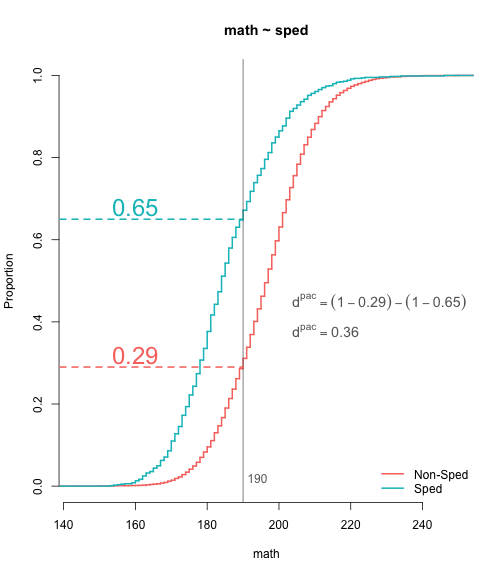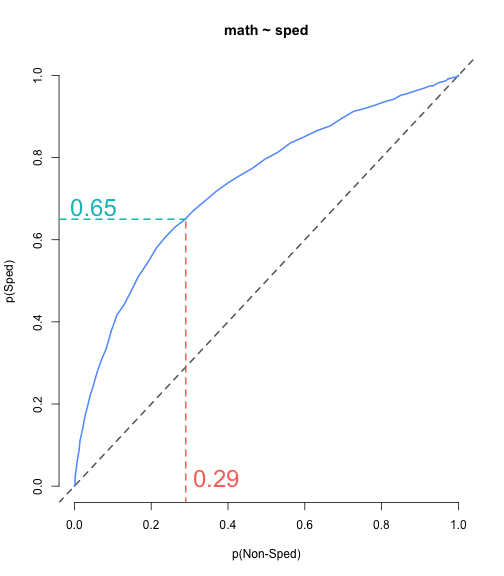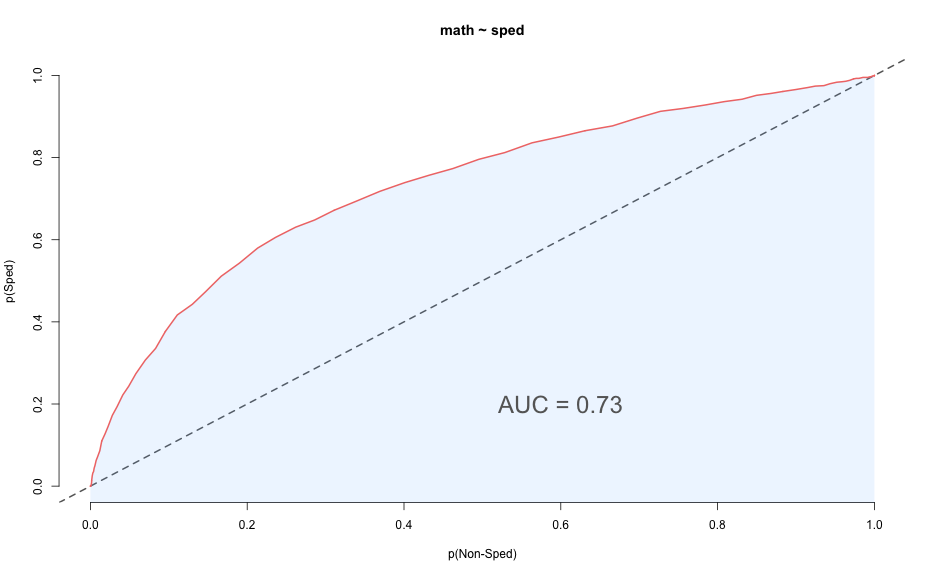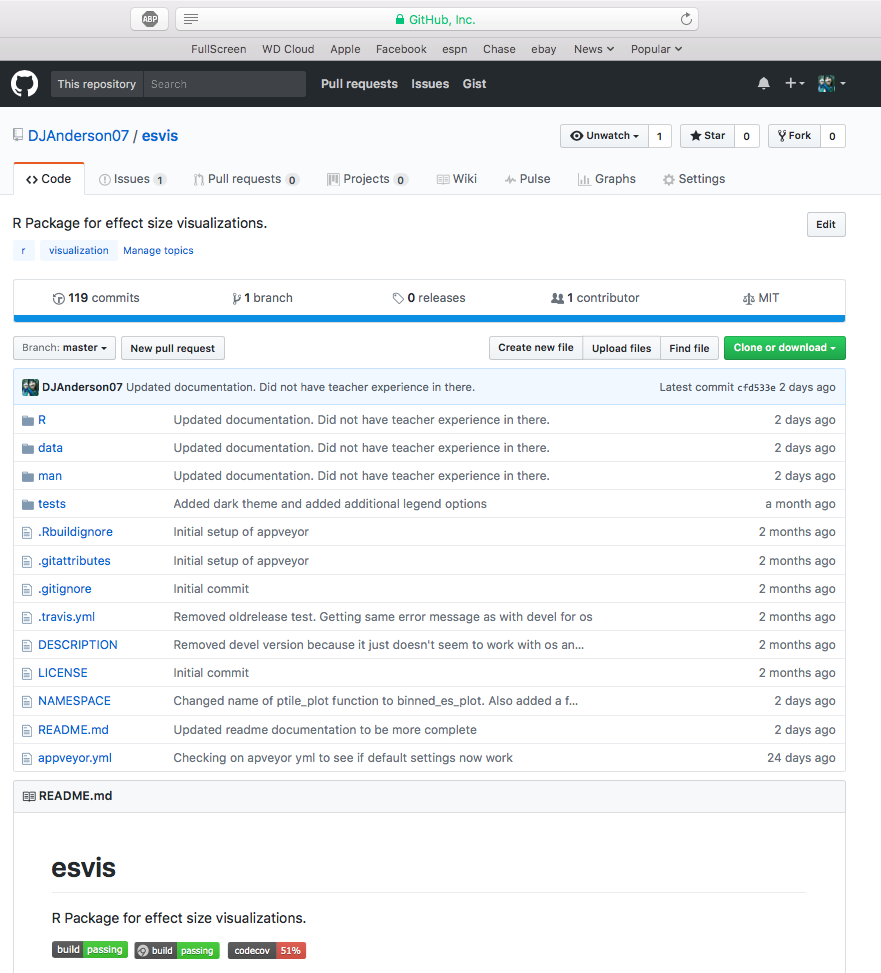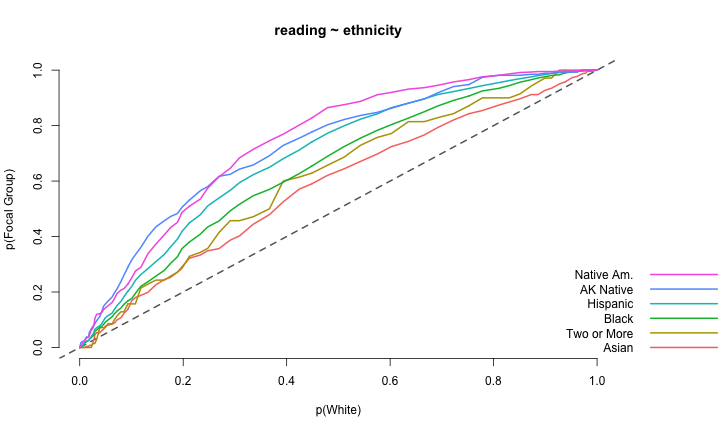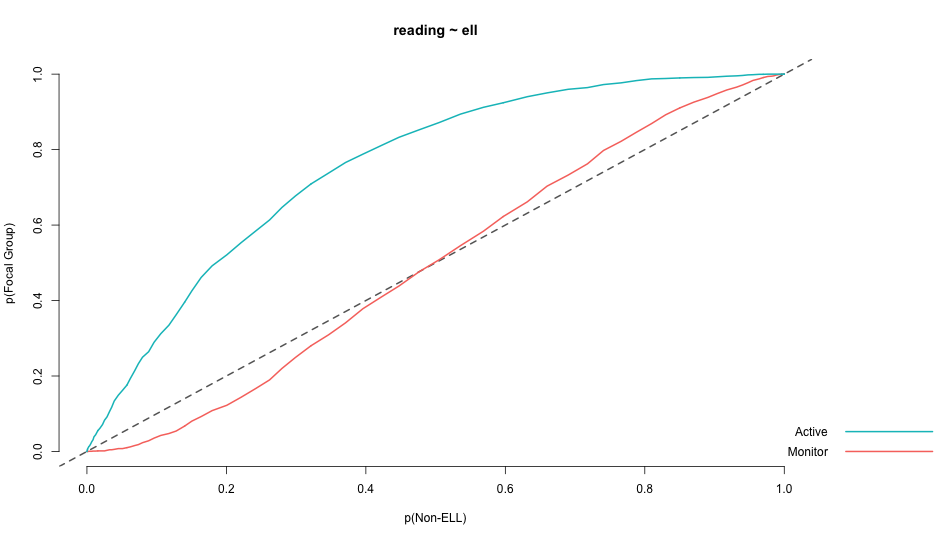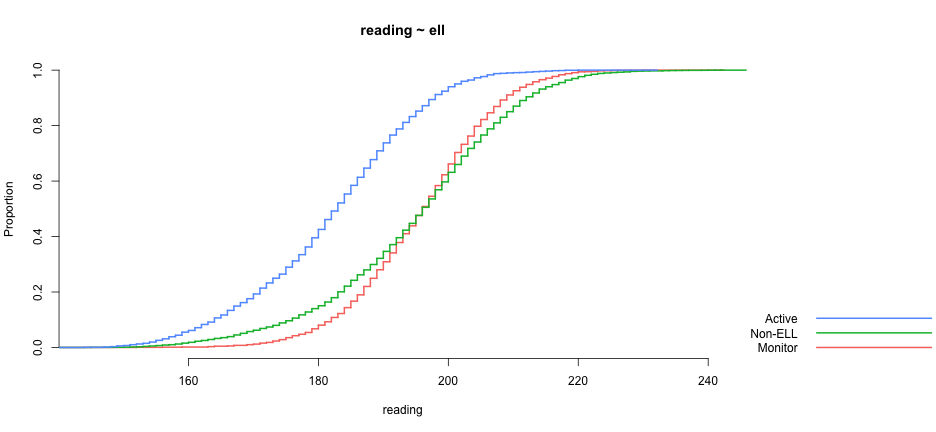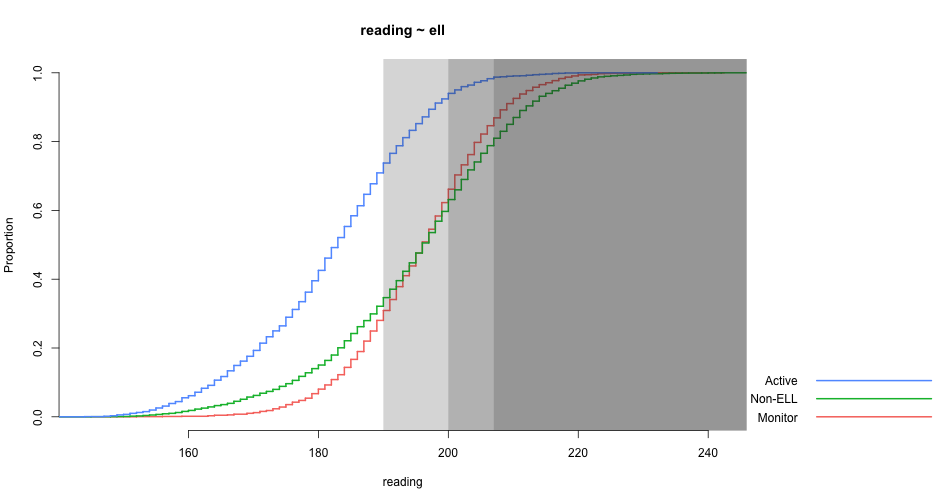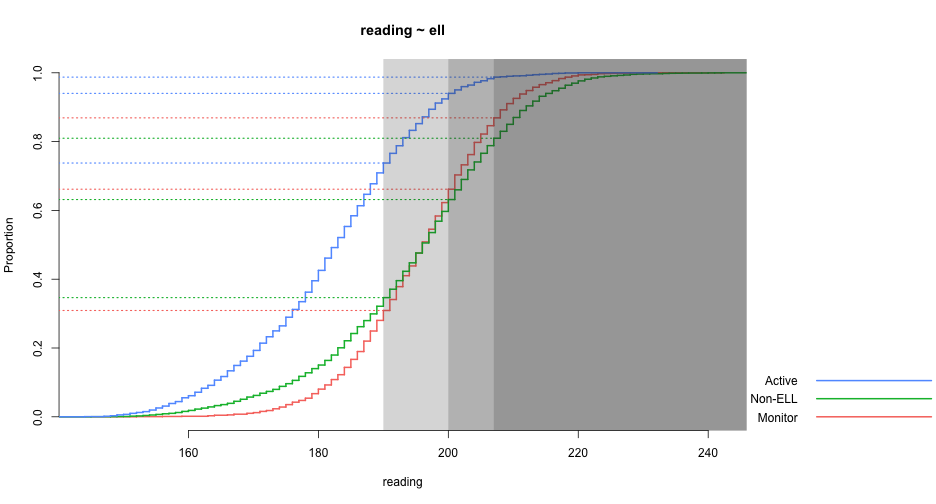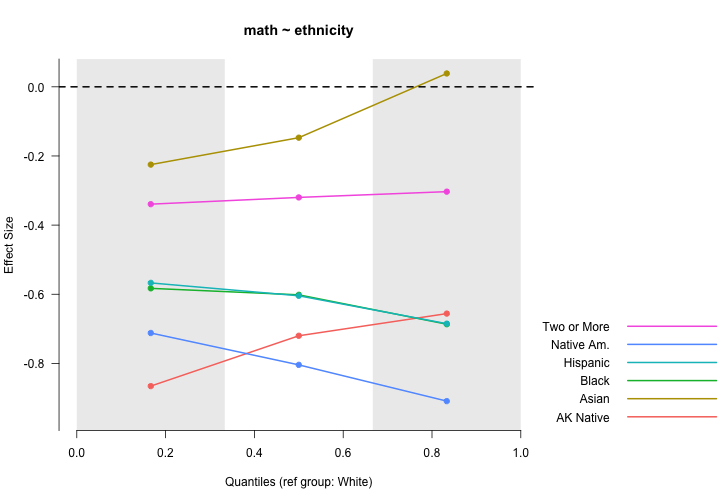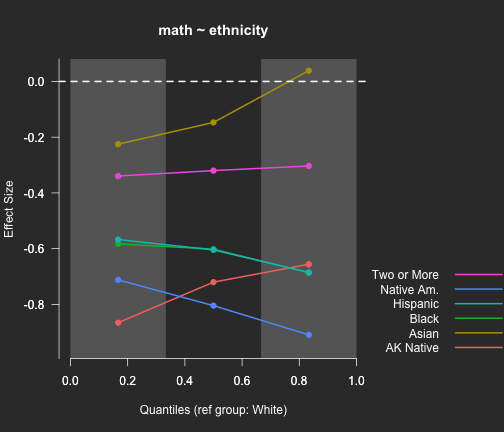Quintile binning
binned_plot(math ~ ethnicity, d, qtiles = seq(0, 1, .2))
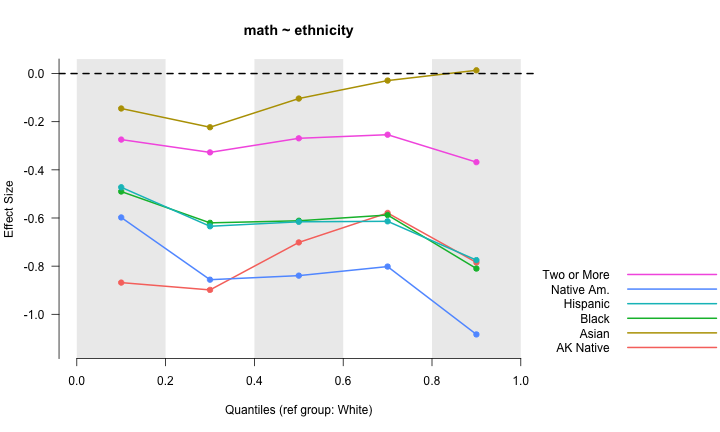
coh_d(math ~ ethnicity, d)
## ref_group foc_group estimate
## 1 White Asian 0.10689571
## 2 White Two or More 0.30281232
## 3 White Hispanic 1.03147010
## 4 White Black 0.72127040
## 5 White AK Native 0.76483392
## 6 White Native Am. 0.84185433
## 7 Asian Two or More 0.07471180
## 8 Asian Hispanic 0.72590767
## 9 Asian Black 0.39210777
## 10 Asian AK Native 0.29878405
## 11 Asian Native Am. 0.39455423
## 12 Two or More Hispanic 0.40811606
## 13 Two or More Black 0.21475724
## 14 Two or More AK Native 0.16297587
## 15 Two or More Native Am. 0.24174797
## 16 Hispanic Black 0.02423883
## 17 Hispanic AK Native 0.25579261
## 18 Hispanic Native Am. 0.30800593
## 19 Black AK Native 0.12256685
## 20 Black Native Am. 0.15962973
## 21 AK Native Native Am. 0.01700166
## 22 Native Am. AK Native -0.01700166
## 23 Native Am. Black -0.15962973
## 24 Native Am. Hispanic -0.30800593
## 25 Native Am. Two or More -0.24174797
## 26 Native Am. Asian -0.39455423
## 27 Native Am. White -0.84185433
## 28 AK Native Black -0.12256685
## 29 AK Native Hispanic -0.25579261
## 30 AK Native Two or More -0.16297587
## 31 AK Native Asian -0.29878405
## 32 AK Native White -0.76483392
## 33 Black Hispanic -0.02423883
## 34 Black Two or More -0.21475724
## 35 Black Asian -0.39210777
## 36 Black White -0.72127040
## 37 Hispanic Two or More -0.40811606
## 38 Hispanic Asian -0.72590767
## 39 Hispanic White -1.03147010
## 40 Two or More Asian -0.07471180
## 41 Two or More White -0.30281232
## 42 Asian White -0.10689571
